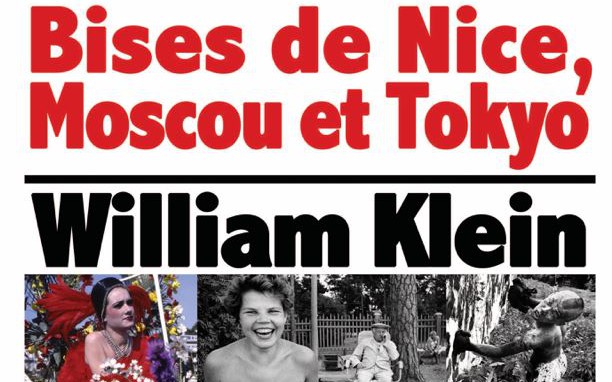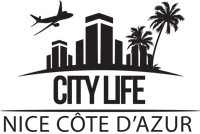
From June 16 to October 2, 2017 at the Museum of the photography of Charles Nègre, the city of Nice invites you to discover an exhibition dedicated to the work of William Klein.
Born in 1928 in New York, William Klein leads in France since 1947 a career as a photographer, painter and film director. After studying sociology, he was sent to Germany in the occupation troops. At the end of this trip, he chose to benefit from a "Franco-American" grant to study at the Sorbonne, but he is more interested in the paint and will make a short stay in the Studio of Fernand Leger before devoting himself entirely to painting abstrai You geometric. Interested in photography and he realizes abstract pictures.

- Bikini, Moscow 1959 © William Klein
In 1954, he meets Alex Libermann, artistic director of the American edition of Vogue who offered him a contract with the financial means to continue its work.
He became one of the dedicated photographers of Vogue.
During a stay in New York, he makes a "photographic journal" and take a book, New York, which will be released at the threshold in 1956 with the support of Chris Marker. His innovative photographic work provokes violent reactions, he contrasts violently with everything that is done. Saturated black, decadrees or blurred images are characteristic of a "photography-action', who wants to enter modernity, that of the New York Daily News, who drew three million copies, seductive and inspiring painting of Andy Warhol and Robert Rauschenberg.
The following year, he obtained the prize Nadar and the book, almost not found today, becomes an object of collection. Indeed, with New York, William Klein initiated a real break with the clean, perfect, autonomous and immediately legible images were those of Cartier Bresson or Doisneau. For William Klein, the photo must rush, does not claim any documentary objectivity. The photographer, can be staged, interact with the subject. The look of the camera is so powerful. William Klein was able to impose a style and an instinctive look, the reality is experienced with subjectivity and shown as it is: sometimes disturbing, sometimes violent, always fascinating.
Three themes have been selected for this exhibition, designed specifically for the space of the Museum of photography Charles Nègre,
Nice, and particularly the Carnival and the battles of flowers, a series colors, rarely shown, produced in 1984 during the centenary of this iconic celebration of our city;
Moscow, a book published in 1964 (images taken between 1959 and 1961) paints a portrait of this city and its people. "I intend to do a book on Moscow, said, and I thought that as an American in the cold war, I would have problems." I was wrong, I've never had a problem. People were not used to see someone with a camera walking among them. "And the result is these pictures of a gone world where light creeps briefly to highlight the attractive features of a face caught a glimpse in the corridors of a station or under the canopy of a park;

- Cineposter, Tokyo, 1961 to William Klein
Tokyo 1961, whose pictures were published in 1964. Images that are a reflection of the meeting of the artist with the urban disorder, or the violence of the artistic avant-gardes. Between black and white prints large formats and painted contacts, this series is a testament to the powerful vision of the photographer and his genius that did recognize as one of the most iconic figures of the art scene international
Nice, Tokyo and Moscow text of Alain Jackson - curator of the exhibition
William Klein was 18 when he leaves America, sent to Germany in the occupation troops. At the end of this trip, he can receive a "Franco-American" grant to study at the Sorbonne, but he prefers to attend workshops and after hesitating between the school of fine arts, the Grande Chaumière, teaching André Lhote, he opts for the Studio of Fernand Leger. It will only a few weeks, preferring to practice an abstract painting austere, geometric and uncompromising that it is please to transcribe onto photographic film, creating bright and pure forms. Drawn in large format, they will be shown at the salon of the new realities in Paris, then under Subjektive Fotografie in Saarbrücken in 1954. Alexandre Liberman, editor in Chief of Vogue, is seduced. Met in Paris, he offers to do work: ' If you ever come to New York, come to see me and you can become, like year art director or something at the magazine, I will give you a way to make a living. " But Klein wants to do a book on New York. Passing through his hometown, he visited him and Lieberman kept his word: "That 'sounds interesting, we' I'll do a port-folio and foot the bill". Vogue took care of everything: movies, paper, lab, enlargements, but the port-folio was never published. A "fashion magazine finançât the less publishable photos of the time", it was surprising, says Klein, but could we expect what he publishes them? As practical photography Klein has nothing to do with the silly and wisely narrative of the moment photography. If he gets out on the street, it's to move, meet the body, indulge in an "action-photography" which must enter modernity, that of the New York Daily News, who drew three million copies, displaying images black and brutal, those who seduce and inspire painting of Andy Warhol and Robert Rauschenberg.
II certainly has a camera, but he admits not knowing to use. And this ignorance, he uses it in an exemplary way without the slightest inhibition. He paces the streets "armed with an unstoppable secret weapon, the truth... everything was there in the viewfinder... nothing of the ethics of the day, the alleged objectivity". II blew all the taboos that saucily photography: contrast, shake, accidents, decadrages... all is good for expressing a visceral subjectivity.
The material he uses is minimal, "a Leica of opportunity, two goals (a 50 and a 100 mm) and basta. Frustrated "at not being able to catch more", he discovers in a New York store a lens wide angle allowing it to literally saturate the frame. "I was shooting at point-blank range, vague plans... I wanted to store all". This is a radical way of combat photography narrative and literal, and impose a new aesthetic. William Klein was little convinced (and still is not) in the interest of the nostalgic and own photography, of illustrated magazines symbolized by a show as the Family of Man, (MoMA, 1955). Blacking out the line, by overloading the framework, by distorting the subject, it imposes a graphic style that has no history and landmark in photography.
And packed for audacity, the age-old classic layout: full page right, white left where clings a brief legend, presentation considers academic, boring, steals shattered in favor of a new Visual object. "Double pages with twenty images stacked on top of each others in the style of comic strip, left-right clashing, double full sheets, parodies of catalogs. He treats the image as a raw material, leaving the reader no respite, no stop. "No place to park", the look is constantly sought and cannot rely on any white.
Photographer of urban crowds, the mass demonstrations, William Klein is thus also uncomfortable in the crowd of the Nice Carnival in the corridors of a Moscow train station or on the lawn of the Embassy of France in Tokyo, it's always the same way to create the disorder to better fix the inevitable chaos of our times.
We could dwell on the images taken in Moscow between 1959 and 1961, pictures of a gone world or light creeps briefly to highlight the attractive features of a face caught a glimpse in the corridors of a station, we could comment on those made in Tokyo in 1961 where ceremonial bow succeed grimacing happenings, but they are images more rarely shown which focus our attention, those of the Nice Carnival. The streets of Nice explode of gaudy colors, body and objects intermingle in a Visual mess that occupies the entire field of the image. This disorder, it is a popular celebration shared by thousands of bodies without faces. These images make him a photographer of our time, that of a subculture shared by all, who gave away the beauty of the tourist brochures to compel us to look at the world differently.


 StayHostel, ...
StayHostel, ... VisitMuseums, ...
VisitMuseums, ... Go outRestaurants, ...
Go outRestaurants, ... ShopsFashion, ...
ShopsFashion, ... LeisuresBeaches, sports, ...
LeisuresBeaches, sports, ... ServicesTourism, ...
ServicesTourism, ...









